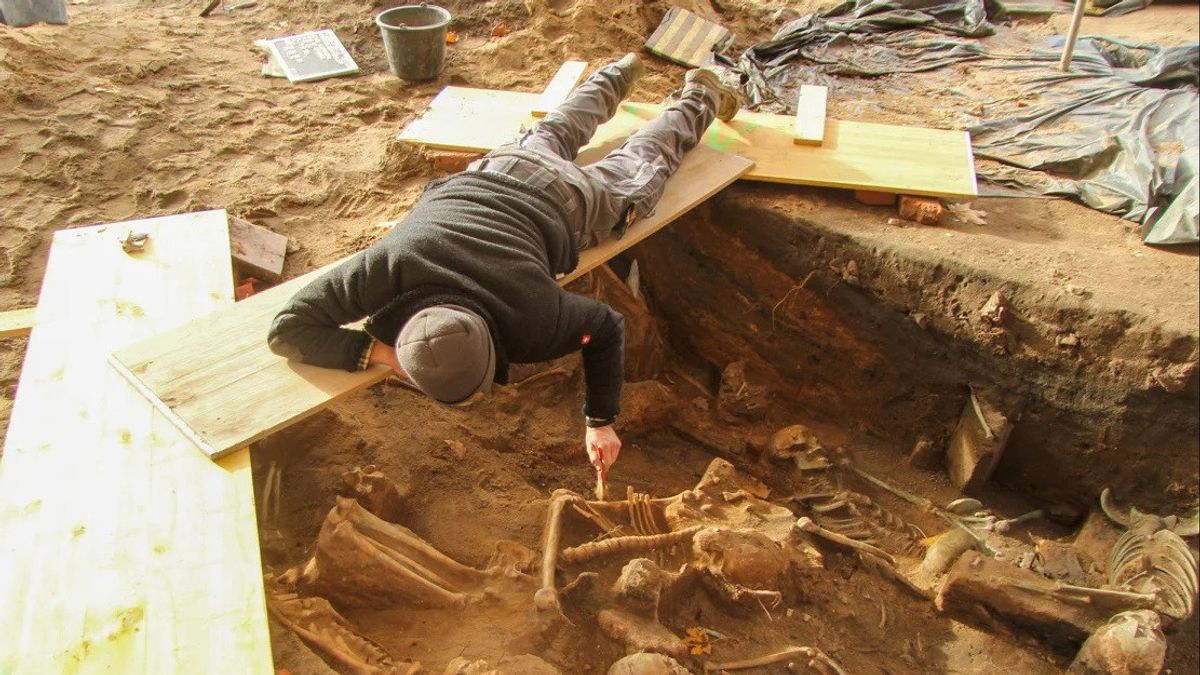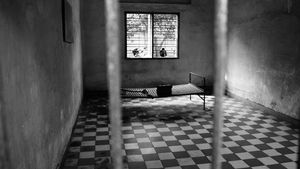JAKARTA - Archaeologists last month said they managed to find the largest mass grave ever excavated in Europe located on a site in southern Germany.
About 1,000 skeletons of victims of the outbreak have so far been found in mass graves in central Nuremberg City, which experts believe may contain more than 1,500 people, according to published press releases.
The remains were found during an archaeological survey before the construction of a new residential building in the city.
Melanie Langbein of the Nuremberg Heritage Conservation Department said eight outbreaks had been identified, each containing several hundred bodies.
"Those people were not buried in ordinary cemeteries although we have determined the tomb of the plague in Nuremberg," Langbein told CNN, as quoted April 25.
"This means that many people die who need to be buried in a short time without paying attention to the practice of Christian funerals," he continued.
Therefore, he continued, epidemics such as the outbreak "very likely" were the cause of mass graves, according to Langbein.
Nuremberg suffers from an outbreak roughly every 10 years from the 14th century onwards, he said, making it difficult to know the dating of the remains.
Archaeologists used radiocarbon dating to determine the date of mass graves between the late 1400s and early 1600s, finding shards of pottery and coins originating from the end of the mass grave on the site.
They also found records from 1634 detailing the outbreaks that killed more than 15,000 people in 1632-1633, which stated nearly 2,000 people were buried near St. Sebastian Spital, the current excavation site, Langbein said.
This evidence led the team to conclude that the older group of remnants may have originated from an epidemic in 1632-1633.
Langbein told CNN the epidemic in 1632-1633 was worse than it was previously due to the impact of the THOUSANDs of War, a series of conflicts carried out by various European countries from 1618 to 1648.
"Nuremberg is surrounded by different troops and the population lives in a very terrible condition," he said.
The tomb contained a'sample' representing the community at the time, the researchers said, allowing them to examine population characteristics.
"With statistical tools, we can trace the size and demographics of the city with the same tools that modern census teams can do to the current population," saidLA, which includes the percentage of children and adults, women and men, and general health.
"Technically we can find out what percentage is left-handed," he added.
Langbein added that the next job is to complete the excavation, as well as clean and analyze the bone material.
"There will also be collaboration with institutions interested in certain aspects of these findings, including analyzing the genome of the outbreak and investigating parasitic eggs in the soil," he added.
"We are also planning an exhibition, but it will take time, so fall 2025 is the earliest time for us to be ready," Langbein said.
SEE ALSO:
Meanwhile, Julian kalian dari In Terra Veritas melakukan penggemuan mengatakan, ia terkejut dengan penemuan tersebut.
"There is no indication to assume there was a cemetery on this land," he said, adding that when the first remains were found he thought it might have come from a bomb attack in World War II.
How come now believes the site may contain more than 1,500 bodies.
"I personally estimate the number will reach 2,000 or even more, making it the largest mass grave in Europe," he said.
The English, Chinese, Japanese, Arabic, and French versions are automatically generated by the AI. So there may still be inaccuracies in translating, please always see Indonesian as our main language. (system supported by DigitalSiber.id)














